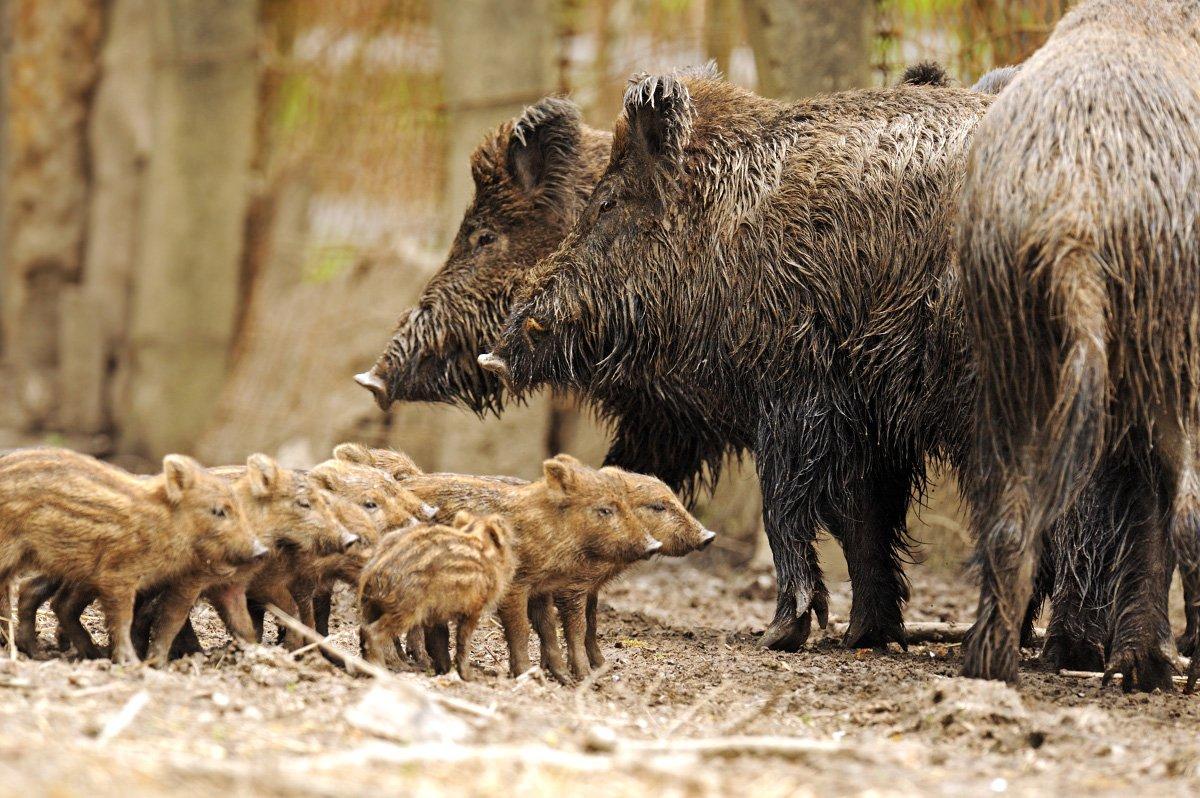Tips on pig control from Southern landowners, plus hog trapping how-to from the Pay Dirt files on Realtree 365
The first feral hogs appeared on our Alabama farm in 2004. That was a single sow with piglets. We shot the sow, but the young ones disappeared. By 2010, the hogs had launched an all-out assault. The corn and chufa we planted for deer and turkeys were rooted and destroyed. Creeks and ponds were wallowed and muddied. Fields were mauled beyond repair.
The damage was significant even though we didn't suffer the invasion without a fight. We shot the pigs at night using shotguns mounted with red-filtered lights. We shot them in daylight any time we encountered them. We even captured them with small corral traps fitted with rooter gates. But despite our best efforts, we were still losing the war with feral hogs.
Eventually, we discovered the ultimate combatant. But it was a long journey getting there. Here's a breakdown of the two trapping methods we tried, and the results of each.
Indiscriminate Trapping
In this category, there are two basic options for hog traps: box traps and corral traps. The names are self-explanatory. Box traps are rectangular or square shaped, and corral traps are round. With both styles, the trap size matters. The bigger the trap, the more hogs that can enter the gate before the gate is triggered by a hog inside of it.
Trap styles vary and so do gates. There are many gate options, including saloon, rooter, guillotine, trip type and push style. All will work with either trap style and catch hogs. Choosing one is just a matter of preference.
This kind of trapping requires a hog to trip the trap, which means this type of trapping rarely catches all the hogs in a sounder since the trap triggers before all the hogs are inside. Daily or frequent baiting and monitoring is required, too, which increases time and expense spent by land managers, and can often foil your efforts, since frequent visits to your bait sites will contaminate the traps with human scent. The end result? An educated hog population that avoids any and all trap configurations.
The general rule of thumb is that you must remove 70% of the hogs on a property to maintain feral populations at status quo each year. Once hogs become educated to trapping, that quota is almost impossible to meet. Despite using indiscriminate trapping in conjunction with shooting hundreds of hogs over several years, we were still losing the battle.
M.I.N.E Trapping
M.I.N.E. is an acronym for Manually Initiated Nuisance Elimination. Translation: the trapper, whether off site or nearby, chooses when to close the trap gate via a smart-phone app. (These are sometimes called smart traps.)
M.I.N.E trapping technology was developed and patented by Jager Pro, a feral hog control company located in Columbus, Georgia. Total sounder removal through trapping and other year-round methods is their mission. It's the only way to effectively control feral hog populations.
To accomplish this, the company developed a sophisticated cellular-enabled camera that monitors the trap and sends text message photos of animals inside it to a smart phone. The Jager Pro app is also paired with a receiver attached to an 8-foot-wide guillotine gate. The operator can monitor photos to determine the number of hogs in a sounder. When they are all inside the trap, the operator issues a close gate command through the app and, within seconds, the gate drops. This nearly real-time monitoring is the most effective method for whole-sounder trapping.
Smart traps are designed as corral traps and are generally larger than traps that use conventional gates. The larger size provides room for entire hog sounders to feed comfortably within the trap. They normally feature a spin feeder in the center with feed times scheduled late in the afternoon and early morning.
Total sounder removal is ultimately more complex than it sounds here, though. Jager Pro has developed an in-depth video training program that teaches operators how to be more efficient in feral hog elimination. The Jager Pro TV show airs weekly on RFD-TV and videos are available on YouTube. The show documents various trapping scenarios that illustrate techniques and tips in feral hog control.
Pigs on Our Farm
In 2016, we adopted the total-sounder-removal concept. Now, when hogs appear on our farm, they typically end up as sausage. We use trail cameras to monitor the entire farm year-round. Once we identify a sounder, we focus on removing the entire group. Sometimes it takes a while for pigs to enter the trap, but to date, our success rate has been phenomenal. Trapping is most effective when native forage and agriculture crops are scarce. We average an annual removal of 75 hogs from our 200-acre farm. (One particularly successful gate drop nabbed 30 hungry porkers.)
Hogs that can't be trapped are eliminated with our methodical shooting program. These are usually a lone boar or small group of hogs. When necessary, we establish a bait site in an area that trap-shy hogs frequent. We burry shelled corn, then attract hogs to the site with soured corn. We monitor the area with a M.I.NE. camera, which transmits text message photos. We also use a Slow Glow L.E.D. Hunting Light to illuminate the area for night hunting. When we receive a photo text - day or night - we make a stalk, counting on the buried corn to occupy the hogs in the meantime. (Check your local hunting regulations before baiting and hunting at night.)
Hogs continue to invade our farm periodically depending on food availability. Thankfully, they don't live here. We still can't grow corn or chufa, but we've managed to significantly reduce the damage to our fields, woodlands and streams. Most importantly, smart technology has given us an advantage in the fight against feral hogs. We may never completely eradicate them. But for now, we're keeping them at bay.









